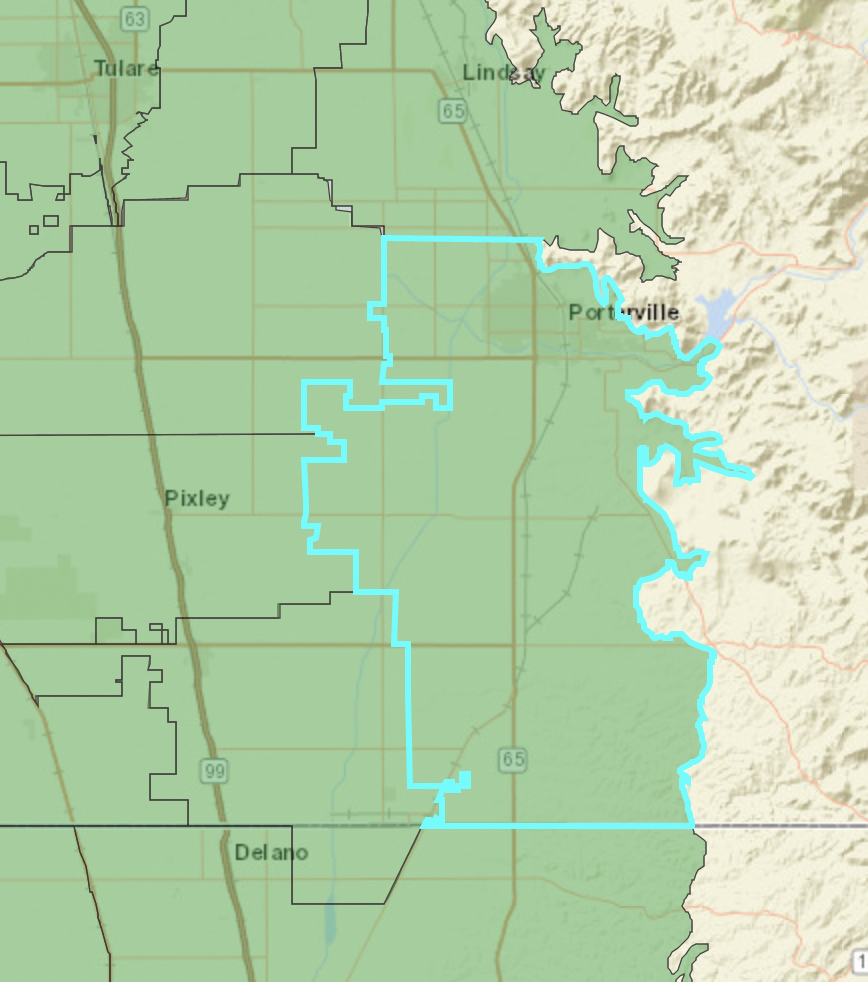Farmers in southern Tulare County on June 30 soundly rejected a proposed land fee that would have helped pay a lump sum settlement of $125 million toward fixing the Friant-Kern Canal, which has sunk because of excessive groundwater pumping.
The Eastern Tule Groundwater Sustainability Agency agreed in 2020 to pay a portion of the cost to repair the canal to Friant Water Authority.
Eastern Tule covers about 162,000 acres, of which 86,000 acres are white lands, which are outside irrigation districts and rely exclusively on groundwater. Pumping in those white lands has been fingered as a main culprit for the subsidence that sank a 33-mile section of the Friant-Kern Canal from about Pixley south to the Kern County line.
The settlement agreement between Eastern Tule and Friant laid out two payment options. The GSA would either pay a lump sum of $125 million by the end of 2022, or $200 million over the next decade through pumping fees charged to its farmers.
The $125 million lump sum would have been paid by a $140-per-acre fee assessed to lands within Eastern Tule GSA.
But in an election held June 30, Eastern Tule GSA farmers rejected the land fee by more than 80 percent, confirmed Rogelio Caudillo, general manager for the GSA.
Without that fee, Eastern Tule GSA’s farmers are now on the hook to pay Friant the full $200 million through pumping fees charged to what’s called “transitional” water. That refers to groundwater allotments to each farmer that decline over time as a means to curtail over pumping. Fees for transitional water are steep – $245 per acre foot last year and $270 per acre foot this year, Caudillo said.
Under the settlement agreement, Eastern Tule GSA pays 92% of the transitional pumping fees it collects to Friant.
Without the $125 million lump sum payment, Friant will be keeping a close watch on the transitional fees, said Jason Phillips, chief executive officer of Friant Water Authority.
“Certainly, now Friant will have an increased level of interest in the details with tracking and accounting for the transitional pumping within the (Eastern Tule) GSA,” Phillips said after the failed election.
Last year, Eastern Tule GSA paid $3.7 million in transitional pumping fees to Friant. So far this year, the GSA has paid $1.4 million, Caudillo said.
But the accounting behind the amount of transitional groundwater, and other types of water, credited to growers has generated controversy.
Some observers from the Friant side have criticized Eastern Tule GSA for giving too many water “credits” to farmers, which potentially reduces the amount of transitional groundwater they need to pump, as well as the fees they pay.
Caudillo acknowledged the criticism saying some people didn’t agree with the GSA crediting growers with rainfall from the year prior to the start of the transitional groundwater program, plus rainfall that year. But, he said, while that gave them more water in the first year, fees increased in the second year.
The GSA also tracks water use through evapotranspiration calibrated by satellite rather than meters on wells, Caudillo said. That means even though a grower may have been credited with one acre foot of water per acre of land, he doesn’t necessarily have the right to pump that acre foot, as the water may have been used by pasture or crops.
“On the surface, it might look like we’re giving free water but we’re on a consumption model,” Caudillo said.
The water crediting system used by Eastern Tule GSA is complicated, Phillips acknowledged.
“It doesn’t make a lot of sense to me but that’s not saying it’s wrong,” he said. “We just need to get a better understanding of how all these buckets of water are accounted for.”
Share this:
- Click to share on Facebook (Opens in new window)
- Click to share on Twitter (Opens in new window)
- Click to share on LinkedIn (Opens in new window)
- Click to share on Reddit (Opens in new window)
- Click to share on Tumblr (Opens in new window)
- Click to share on Pinterest (Opens in new window)
- Click to share on Pocket (Opens in new window)
- Click to share on Telegram (Opens in new window)
- Click to share on WhatsApp (Opens in new window)
- Click to print (Opens in new window)







